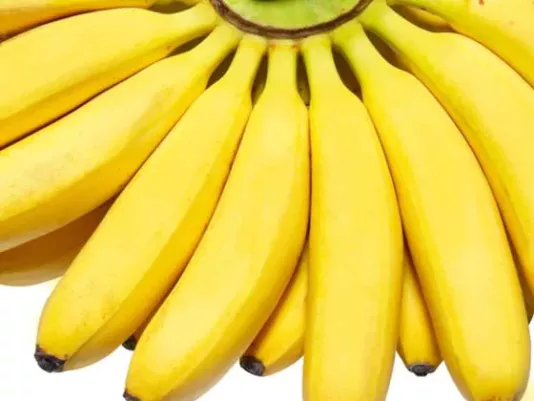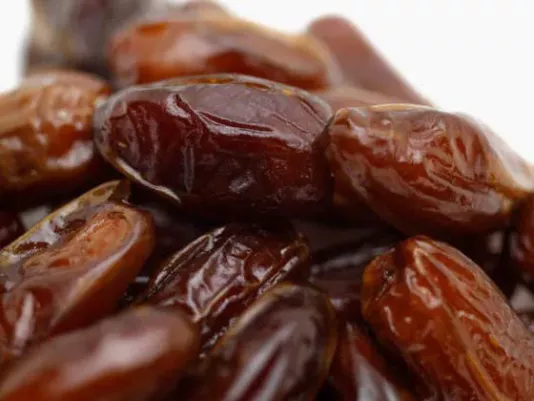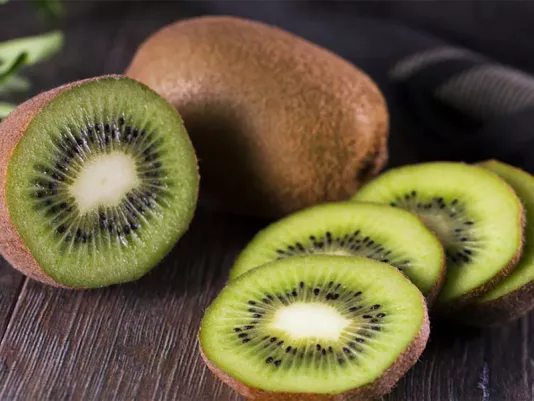Tropical and Exotic Fruits
Tropical and exotic fruits always give me a sense of celebration and discovery, because each of them has its own unique character, taste, and way of use. I often turn to them when I want to diversify my menu or add something unusual. Avocado for me is a universal product that combines delicate texture and healthy fats, so I use it both in fresh salads and in smoothies or even in baking. I love pineapples for their bright tropical flavor, which perfectly suits desserts, salads, and meat dishes. Canned pineapples always help me in winter when I want something summery and fragrant. Bananas have become an integral part of my kitchen: I make desserts with them, add them to porridge, bake banana bread, or simply use them as a quick snack. Pomegranate is a more refined fruit for me, as its juicy seeds decorate salads, desserts, and sauces, while pomegranate juice adds a tangy note to dishes. I use kiwi both for decorating cakes and for refreshing salads or drinks, as it brings a special sweet-and-sour touch. For me, all these fruits are not just ingredients but an opportunity to create new culinary combinations, discover the diversity of world flavors, and bring a bit of exoticism into everyday life.
Varieties of Tropical and Exotic Fruits
Avocado and Its Versatility
Avocado has become a real discovery for me, as this fruit combines delicate texture and neutral taste, making it universal in cooking. I often use it in salads because it adds creaminess and makes dishes more nutritious. In combination with tomatoes, greens, and olive oil, avocado creates a simple and very tasty salad that always helps me when I need to quickly prepare something healthy. Another favorite dish for me is avocado toast. I just mash the soft pulp, add a little lemon juice and salt, and get the perfect breakfast or snack. Avocado is also great for smoothies, giving them a creamy consistency and filling the body with healthy fats. In baking, I sometimes use it as a substitute for butter, which makes dishes lighter yet still very tasty. I’ve noticed that avocado pairs well with many products: from seafood to eggs or even fruits. This allows me to create the most diverse combinations and experiment without limits. For me, avocado has become a symbol of modern cuisine, where health and taste go hand in hand. Thanks to it, I can make my diet more varied while taking care of my health.
Pineapples and Their Uses
Pineapples have always been the embodiment of tropical freshness for me. The juicy pulp of this fruit makes it perfect for desserts: I love adding pineapple to fruit salads, making mousses based on it, or simply serving it in pieces with ice cream. Canned pineapples are my real lifesaver. They are available all year round and are great for baking. I often use them in pies and cakes, where they create a light sweet-and-sour note that balances the flavor of the dough. Combined with meat, pineapple reveals itself in a special way. I love making chicken with pineapple: its juiciness and sweetness go perfectly with the tenderness of the meat. In salads, pineapple adds freshness and originality – for example, combined with cheese and nuts, it creates a particularly pleasant contrast. I have also tried making sauces based on pineapple, and they go wonderfully with seafood or baked fish. For me, pineapple is a fruit that opens up countless possibilities. It can be the main element of a dessert, a harmonious addition to meat, or a refreshing detail in a drink. I’ve noticed that even a small amount of pineapple can change the taste of a dish, making it brighter and more interesting. That’s why this fruit always holds a special place in my kitchen.
Bananas in Everyday Cooking
Bananas for me are always a simple and convenient way to have a quick snack, but their significance in my kitchen is not limited to this. I love using bananas in baking: banana bread, muffins, or pancakes with their addition always turn out tender, fragrant, and pleasantly sweet without excess sugar. For me, this is a universal ingredient that allows me to prepare a healthy dessert without complicated recipes. Another favorite use of bananas for me is smoothies. I always use them as a base because they give the drink a creamy texture and natural sweetness. In combination with berries, spinach, or even cocoa, bananas create delicious and nutritious drinks that are perfect for breakfast or a light snack. I also use bananas in fruit salads, where they go well with citrus fruits, apples, or kiwi. And frozen bananas are a real find for me: they can be blended to make natural ice cream without added sugar. I often prepare such dishes for my family in the summer, and they are always a hit. For me, bananas are a fruit that is always at hand and helps create tasty, healthy, and simple dishes. I value them for their availability and variety of uses since they are equally good for both desserts and healthy breakfasts.
Pomegranate and Its Culinary Possibilities
Pomegranate for me is a real gem among fruits. Its juicy seeds look like little rubies and add festivity to any dish. I love sprinkling them on salads: they bring freshness, a light sourness, and make the taste more complex. Pomegranate goes perfectly with greens, nuts, and cheese, creating some of my favorite combinations. I especially enjoy adding it to warm dishes, such as roasted vegetables or meat, where it enhances the flavor and adds a pleasant contrast. Pomegranate juice is a separate topic for me. I use it not only as a drink but also as a base for sauces and marinades. It adds a special sweet-and-sour note to meat dishes, making them more tender and flavorful. Sometimes I make desserts based on pomegranate juice, such as jelly or mousses, which have a bright color and refreshing taste. For me, pomegranate also symbolizes health. Its seeds are rich in vitamins and antioxidants, so I always try to include it in my diet, especially in autumn and winter. I value this fruit for its versatility: it is equally good in simple everyday dishes and in special culinary experiments. Pomegranate is always an accent in my kitchen. Its vibrant appearance, rich taste, and ability to decorate any dish make it indispensable when I want to add something beautiful, healthy, and unusual to my menu.
Kiwi and Its Refreshing Taste
Kiwi for me is always associated with freshness. Its bright green pulp and pleasant acidity perfectly enliven any dish. I love adding kiwi to fruit salads, where it creates balance between sweet and tender fruits. In desserts, kiwi becomes a special decoration: I often use it for decorating cakes, tarts, or cheesecakes, and they immediately acquire a festive look. I also discovered that kiwi is great for drinks. Kiwi smoothies turn out refreshing and full of vitamins, and if you add it to mineral water or lemonade, the drink gets a special taste. For me, kiwi has become the ideal ingredient for summer cocktails that save in hot weather. Besides desserts and drinks, I also use kiwi in more unexpected dishes. For example, it pairs well with chicken or seafood, adding tenderness to them thanks to its enzymes. I also like making light kiwi sauces for salads, where its sourness perfectly balances oil and spices. For me, kiwi is a fruit that always adds a touch of freshness and brightness to the menu. It is easy to combine with other ingredients, and thanks to this, it has become one of my favorite exotic fruits. Kiwi makes dishes not only tasty but also visually appealing, so I always keep a few in the fridge.
Storage and Use of Tropical and Exotic Fruits
I always try to store tropical and exotic fruits properly so that they don’t lose freshness and benefits. I leave bananas at room temperature until they ripen, and then I can freeze them for smoothies or desserts. I let avocados ripen in a paper bag with an apple or banana, and once ripe, I keep them in the fridge for no more than a few days. I store pineapples and kiwi in a cool place or in the fridge if I don’t plan to use them right away. Pomegranate is convenient for me because it can be stored for a long time without losing flavor and juiciness. In cooking, these fruits are universal for me. I use them for desserts, drinks, salads, and even main dishes. Canned pineapples are always at hand when I need to quickly make a salad or decorate a cake. I love using pomegranate juice for sauces, and avocado for spreads on bread or healthy smoothies. Bananas are the basis of quick breakfasts and healthy snacks for me, while kiwi always adds freshness to any dish. I am convinced that tropical and exotic fruits open up vast possibilities for culinary experiments. They help create bright and healthy dishes even in everyday meals. For me, they have become a way to bring more variety into my kitchen and make familiar recipes more interesting and refined.





